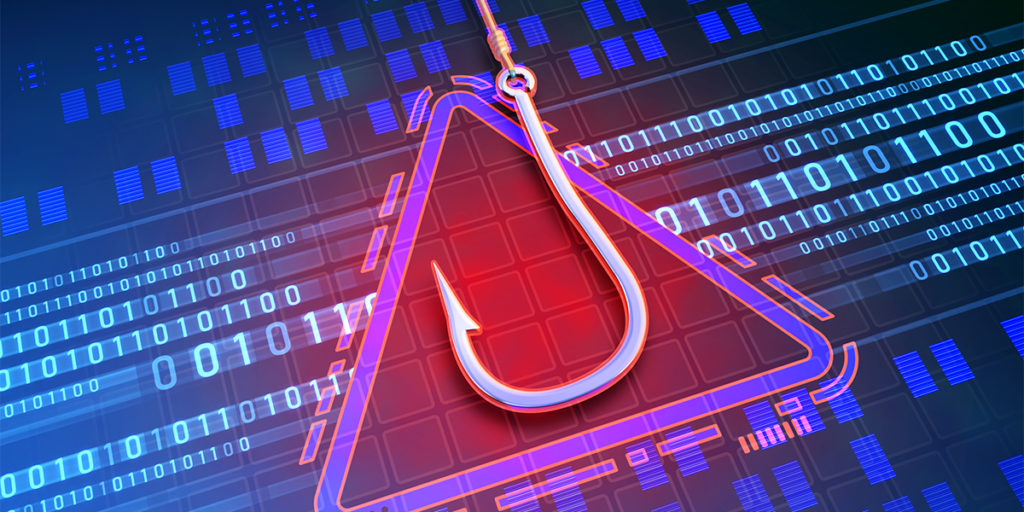Table of Contents
Small and medium businesses (SMBs) are up against innumerable challenges when it comes to cybersecurity. In today’s digital landscape, the threats your organization faces are more sophisticated and relentless than ever. Cybercriminals are constantly evolving their tactics and conjuring new types of security vulnerabilities. And, if you and your organization aren’t aware of these threats, you will be vulnerable to these cyberattacks.
At Innovative Integration, we understand the task SMBs face in protecting themselves and their assets from cyber threats. That’s why we’re here to guide you through the 10 most prevalent types of security vulnerabilities and equip you with the knowledge you and your team need to safeguard your organization.
Join us as we investigate 10 major types of security vulnerabilities and how they work. In each, we’ll discuss a couple specific threats so you can understand them and minimize the risks.
Learn How to Maintain Cyber Hygiene During Hybrid Work
Understand Security Vulnerabilities
Security vulnerabilities refer to weaknesses or flaws in a system which malicious actors exploit to gain unauthorized access, disrupt services, or compromise sensitive information. These vulnerabilities exist in various forms, such as software vulnerabilities, misconfigurations, poor access controls, or social engineering techniques.
For SMBs, security vulnerabilities present an ever-present threat. Hackers specifically target smaller businesses because they often have fewer resources dedicated to cybersecurity, making them an easier target. Moreover, cybercriminals know SMBs may hold valuable customer data or have connections to larger organizations, making them attractive entry points into larger networks.
Let’s dive into the specific types of security vulnerabilities and arm you with the knowledge to safeguard your business.
10 Types of Security Vulnerabilities
1. Network Vulnerabilities
Network vulnerabilities pose significant risks to SMBs as they can expose sensitive data or allow unauthorized access to critical systems. Understanding the nature of network vulnerabilities is crucial for implementing effective security measures. Let’s explore the common network vulnerabilities and the threats they present to SMBs.
Phishing Attacks
Cybercriminals use phishing attacks to trick individuals into revealing sensitive information or performing malicious actions. Attackers often impersonate someone trustworthy, such as financial institutions or established organizations, through emails or deceptive websites.
SMBs are particularly vulnerable to phishing attacks due to the reliance on email communication and potential lack of employee awareness. By clicking on malicious links or providing credentials, employees inadvertently grant attackers access to sensitive company data or compromise network security.

Phishing attacks are a major threat to SMBs’ cybersecurity.
Man-in-the-Middle Attacks
In a man-in-the-middle attack, an attacker intercepts communication between two parties to eavesdrop, alter, or manipulate the exchanged data. SMBs are susceptible to man-in-the-middle attacks, especially when using public Wi-Fi networks or inadequately secured communication channels.
Attackers can gain access to sensitive information transmitted over the network, such as login credentials, financial data, or confidential business documents.
2. Software Vulnerabilities
Software vulnerabilities are weaknesses in software applications attackers can exploit to gain access or compromise data integrity. Common software vulnerabilities include:
SQL Injection
SQL injection is a type of web application vulnerability that allows attackers to manipulate a database by injecting malicious SQL code into user inputs. Exploiting this vulnerability can give hackers unauthorized access to sensitive information, modify or delete data, or execute arbitrary commands.
Cross-site Scripting (XSS)
Cross-site scripting (XSS) is a web application vulnerability where attackers inject malicious scripts into trusted websites to target unsuspecting users. By exploiting XSS vulnerabilities, hackers can execute scripts in victims’ browsers, leading to actions like stealing sensitive information or spreading malware. SMBs are at risk of XSS attacks, especially if their websites or web applications do not validate user input or enforce secure coding practices.
3. Physical Security Vulnerabilities
While cybersecurity—especially for SMBs—often takes the spotlight, it is essential not to overlook the significance of physical security vulnerabilities. Physical security vulnerabilities refer to weaknesses in the physical components and controls that protect an organization’s assets.
Theft or Loss of Physical Devices
Theft or loss of physical devices such as phones, laptops, or storage devices, poses a significant risk to SMBs, as it can result in the exposure of sensitive data and unauthorized access to organization networks.
To mitigate this vulnerability, SMBs should enforce device encryption, implement strong password protection, multifactor authentication, and consider remote wiping capabilities for lost or stolen devices.

The theft of a laptop or company device can lead to sensitive data being stolen.
Tampering with Physical Security Controls
Tampering with physical security controls involves interfering with security systems such as cameras or alarms. This vulnerability can allow attackers to bypass or disable security measures, providing them with increased access to a facility or compromising the integrity of surveillance systems.
SMBs should regularly inspect and maintain physical security controls, use tamper-evident seals, and implement security monitoring systems to detect and respond to tampering attempts effectively.
4. Human Error Vulnerabilities
Despite sophisticated technology and robust security policies, human errors can still lead to significant cybersecurity breaches. Here are some examples as to how:
Weak Passwords and Authentication
Weak passwords and authentication practices remain one of the most common human error vulnerabilities. Employees may choose weak passwords, reuse passwords across multiple accounts, or share them with unauthorized individuals. These practices can lead to unauthorized access, data breaches, or compromise of critical systems.
To minimize this vulnerability risk, SMBs should prioritize password policies that enforce strong and unique passwords, implement multi-factor authentication, and provide regular security awareness training to educate employees about password best practices.
Insider Threats
Insider threats refer to risks originating from within an organization, whether unintentional or malicious. These threats can come from employees, contractors, or business partners who have authorized access to sensitive data or systems.
To mitigate insider threats, SMBs should implement strong access controls, monitor and log user activities, and practice good cyber hygiene.
5. Application Vulnerabilities
Application vulnerabilities refer to weaknesses or flaws within software applications that can be exploited by malicious actors. These vulnerabilities can lead to unauthorized access, data breaches, or compromise of sensitive data.
Insecure Direct Object References
Insecure direct object references occur when a developer exposes a reference to an internal implementation object, such as a file or database record, without proper access controls. This vulnerability allows attackers to bypass authentication and directly access sensitive information or perform unauthorized operations.
SMBs need to implement appropriate access controls and application logic to validate user requests and prevent insecure direct object references.
Security Misconfigurations
Security misconfigurations involve the incorrect or unintended configuration of applications, platforms, or infrastructure components. These misconfigurations may result in unintended exposure of sensitive data, unauthorized access, or the introduction of vulnerabilities into the system.
To prevent security misconfigurations, SMBs should follow recommended security guidelines, update their security plans, and ensure timely and accurate configuration management.

Security plans, data files, and guidelines should be updated regularly.
6. Cloud Vulnerabilities
Cloud vulnerabilities refer to security risks associated with the use of cloud computing services. While cloud computing offers numerous benefits, it also introduces unique security challenges that SMBs must address. These include:
Insecure Interfaces and APIs
Insecure interfaces and APIs pose a significant risk in the cloud environment. Weak authentication and authorization mechanisms, insecure transmission of data, or improper access controls can be exploited by attackers to gain unauthorized access to cloud resources or sensitive data.
SMBs should carefully evaluate the cloud security controls the service provider includes, implement secure communication protocols, and enforce strong authentication and authorization mechanisms for accessing cloud resources.
Data Breaches
Data breaches are a critical concern when it comes to cloud vulnerabilities. A data breach in the cloud can result in unauthorized access, theft, or exposure of sensitive information. This can lead to financial loss, reputational damage, or non-compliance with data protection regulations.
SMBs should prioritize robust data encryption, access controls, and regular monitoring to detect and respond to potential data breaches in the cloud environment.
7. Mobile Security Vulnerabilities
Mobile security vulnerabilities are risks associated with mobile devices such as smartphones and tablets. The widespread use of mobile devices in organizations has made them popular targets for cybercriminals to gain unauthorized access to corporate networks and steal sensitive data.
SMBs need to be aware of the following risks:
Data Leakage Through Mobile Apps
Data leakage through mobile apps occurs when apps collect or transmit sensitive data without proper protection or authorization. This can result in unauthorized access to confidential information, loss of privacy, or financial fraud.
SMBs should ensure the apps used within their organization meet industry security standards and regulations, have robust data encryption, and user access controls.

Malware and Ransomware
Mobile devices can be vulnerable to malware and ransomware attacks. Once infiltrated, attackers can steal sensitive data, disrupt business operations, or demand a ransom to release access to systems.
SMBs should implement antivirus and malware detection software, apply software patches and updates that address known vulnerabilities, and train employees on how to recognize and report potential malware or ransomware threats.
8. IoT Vulnerabilities
IoT (Internet of Things) vulnerabilities are risks associated with the use of internet-connected devices, including smart home devices and medical devices. These devices are often vulnerable to cyberattacks that can result in unauthorized access, data breaches, or compromise of critical systems. In this section, we will provide an overview of IoT vulnerabilities, how they work, and specific threats they pose to SMBs.
Insecure Default Settings
Insecure default settings refer to the lack of security measures out-of-the-box in IoT devices. Manufacturers of IoT devices often prioritize ease of use over security, leaving these devices vulnerable to attacks.
SMBs should ensure patch updates are regularly applied to IoT devices to address identified vulnerabilities and prevent unauthorized access.
Lack of Encryption in IoT Devices
Lack of encryption in IoT devices poses a significant risk to SMBs, particularly when information is transmitted over unsecured networks or stored in unencrypted form. This can lead to unauthorized access, data breaches, or compromise of critical systems.
SMBs must ensure that all IoT devices have proper encryption protocols to secure data in transit and at rest.
9. Social Engineering Vulnerabilities
Social engineering attacks exploit human psychology to manipulate individuals into divulging sensitive information or taking harmful actions. Attackers may use various techniques such as phishing emails, phone calls, or impersonation to deceive employees and gain unauthorized access or compromise security controls.
SMBs should invest in employee education and awareness programs to help employees recognize and respond appropriately to social engineering attacks.
Phishing and Spear Phishing
Phishing and spear phishing are common social engineering techniques used to deceive individuals into disclosing sensitive information or performing actions that benefit the attacker. Phishing attacks typically involve mass emails or messages that appear to be from trusted sources, while spear phishing targets specific individuals with personalized and convincing messages.
SMBs must educate their employees about these threats, implement robust email filters, and encourage vigilance when interacting with unsolicited communications.
Baiting and Tailgating
Baiting and tailgating are tactics that rely on an attacker’s ability to exploit human trust and curiosity. Baiting involves enticing individuals with an offer, such as a USB drive infected with malware, while tailgating involves an attacker physically following an authorized person into a restricted area.
SMBs should establish strict access control policies, implement security awareness training to educate employees about these tactics, and maintain surveillance measures to detect and prevent unauthorized access.

USB drives from untrusted sources should not be accepted or used.
Pretexting and Impersonation
Pretexting and impersonation involve creating a false identity or pretext to deceive individuals into divulging sensitive information or granting unauthorized access. Attackers may impersonate a trusted individual, such as an IT technician or a coworker, to gain the target’s trust and manipulate them into providing valuable information.
To mitigate these risks, SMBs should implement strict verification and authentication procedures, conduct regular employee training on identifying and reporting suspicious activities, and establish clear communication channels for verifying requests for sensitive information.
10. Supply Chain Vulnerabilities
Supply chain vulnerabilities refer to risks arising from the use of third-party suppliers, vendors, or manufacturers in an organization’s supply chain. These vulnerabilities can expose SMBs to various security threats, including unauthorized access, compromised software or hardware, or counterfeit components.
Compromised Software and Hardware Suppliers
Compromised software and hardware suppliers can introduce security risks into an organization’s supply chain. Attackers may infiltrate the systems or compromise the software or hardware produced by suppliers, leading to the distribution of malicious components or backdoors embedded within the products.
SMBs should conduct thorough due diligence when selecting suppliers, perform regular security assessments, and establish strong contractual agreements that address security requirements.
Lack of Visibility and Control Over the Supply Chain
Lack of visibility and control over the supply chain poses a significant challenge for SMBs. Without a clear understanding of the various entities and processes involved in the supply chain, organizations may be unaware of potential security risks or vulnerabilities.
To address this, SMBs should establish robust supply chain management practices, conduct regular audits to identify and address security gaps, and implement monitoring mechanisms to ensure adherence to security standards.
Counter Security Vulnerabilities with Innovative Integration
It is crucial for SMBs to prioritize cybersecurity measures so they can protect their assets, data, and the business itself. It’s no secret that neglecting cybersecurity can lead to devastating consequences, including financial loss, damage to reputation, and legal liabilities.
By following necessary cybersecurity measures, SMBs can enhance their defenses against cyber threats and minimize the likelihood of successful attacks. It is also important for SMBs to stay proactive and informed about the evolving landscape of cybersecurity to remain resilient in the face of new and emerging threats.
At Innovative Integration, we understand the unique challenges SMBs face when it comes to cybersecurity. Our team of experts is dedicated to providing comprehensive solutions and expert guidance to help SMBs build robust cybersecurity strategies and safeguard their valuable assets.
Ready to learn more? Contact Innovative Integration! We’re here to help you navigate the complexities of cybersecurity and protect your business against an ever-changing threat landscape.





